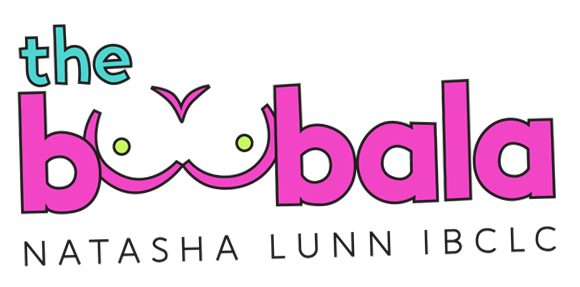Page Content
- Why does breast milk stain yellow?
- Can mastitis milk make a baby sick?
- What causes milk to be yellow?
- Can babies drink mastitis milk?
- What does breast milk jaundice look like?
- What happens if baby has bad breast milk?
- Is foremilk bad for babies?
- Why is my breast bringing out yellow milk?
- Is mastitis milk yellow?
- Is it OK if breast milk is yellow?
Understanding Yellow Breast Milk: A Closer Look
Breast milk is a remarkable substance, constantly changing in composition and appearance to meet the needs of a growing infant. One of the most common variations in breast milk is its color, particularly when it appears yellow. This phenomenon can be attributed to several factors, primarily linked to the stages of lactation and the specific type of milk being produced.
Colostrum: The First Milk
The yellow hue of breast milk is most commonly associated with colostrum, the first form of milk produced by the mammary glands shortly after childbirth. Colostrum is often referred to as “liquid gold” due to its rich nutrient profile and its distinctive yellow color. This early milk is thick and packed with antibodies, vitamins, and minerals essential for a newborn’s health, providing crucial immune support during the first few days of life. The yellow color of colostrum is primarily due to its high concentration of beta-carotene, a precursor to vitamin A, which is vital for the infant’s development.
Changes Over Time
As breastfeeding continues, the composition of breast milk evolves. After the initial days of colostrum, the milk transitions to mature milk, which can vary in color from white to slightly yellow. This change is normal and reflects the milk’s fat content and hydration levels. The milk may also appear yellowish if it has been frozen and then thawed, as the freezing process can alter its appearance.
Separation and Variability
It’s also important to note that breast milk can separate when stored, leading to a layer of thicker, creamier milk on top, which may appear yellow, while the thinner layer underneath can look bluish or clear. This separation is a natural occurrence and does not indicate any problem with the milk itself.
When to Be Concerned
While yellow breast milk is typically a sign of healthy colostrum or normal variations in mature milk, there are instances where a yellowish tint could raise concerns. If the milk appears unusually yellow or if there are other symptoms such as a foul smell or changes in the infant’s behavior, it may be worth consulting a healthcare professional to rule out any underlying issues.
In summary, yellow breast milk is often a normal and healthy sign, particularly in the early days of breastfeeding. It reflects the body’s incredible ability to provide tailored nutrition to newborns, ensuring they receive the best start in life. Understanding these variations can help new parents feel more confident in their breastfeeding journey.
Why does breast milk stain yellow?
Does Breast Milk Stain Fabrics? Absolutely. Breast milk contains proteins your growing baby needs. Those same proteins leave a yellowish stain on baby clothes, blankets, and burp cloths.
Can mastitis milk make a baby sick?
What to do if you get breast mastitis. Keep nursing. Your baby will not get sick from your milk. Start with the unaffected breast to allow your milk to let-down in the affected breast before feeding.
What causes milk to be yellow?
Hindmilk: As you continue to pump or breastfeed, the fat content in your milk goes up. As the fat increases, breast milk turns into creamier milk called hindmilk. Hindmilk has a thicker white or yellow appearance.
Can babies drink mastitis milk?
Mastitis is not contagious: there is no risk to your baby in continuing to breastfeed.
What does breast milk jaundice look like?
Jaundice is a condition produced when excess amounts of bilirubin circulating in the blood stream dissolve in the subcutaneous fat (the layer of fat just beneath the skin), causing a yellowish appearance of the skin and the whites of the eyes.
What happens if baby has bad breast milk?
If your baby has had spoiled breast milk, they’ll likely let you know. They may throw up, or have an upset stomach, diarrhea or fever. It’s important to call your pediatrician if you think your baby may be sick from having spoiled breast milk.
Is foremilk bad for babies?
While very rare, it is possible to have an imbalance of foremilk to hindmilk. Also called a lactose overload, this is when your baby is consuming too much foremilk, thus consuming too much lactose. This imbalance can result in gas, colic, and loose green bowel movements in baby.
Why is my breast bringing out yellow milk?
The color of your nipple discharge typically depends on the cause. For example, yellow discharge usually indicates an infection, while greenish brown or black may suggest mammary duct ectasia. Texture or consistency may also be a factor in finding a cause for nipple discharge.
Is mastitis milk yellow?
But the mastitis may also include other signs, like these: Flu-like symptoms like fever, chills, body aches, nausea, vomiting, or fatigue. Yellowish discharge from the nipple that looks like colostrum. Breasts that feel tender, warm, or hot to the touch and appear pink or red.
Is it OK if breast milk is yellow?
This is completely normal, and many mothers produce yellow milk during the first few days after delivery. This is called colostrum, or first milk, since it’s the first milk your breasts produce after delivery. Colostrum is rich in antibodies and thicker, and you’ll produce this milk for up to 5 days after giving birth.

